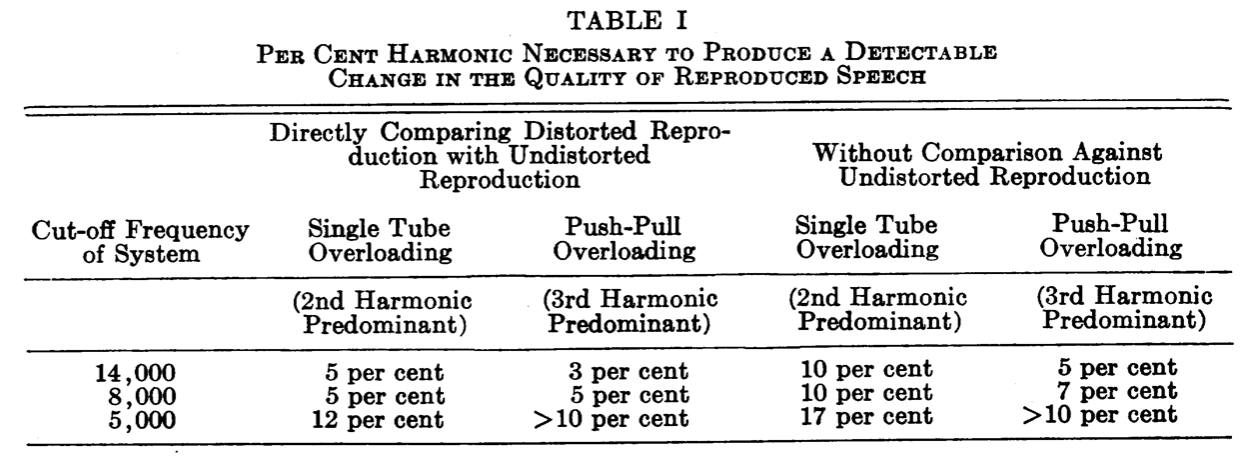For anyone who is interested in a little more of the history of feedback development, I have posted an article from the Proceedings of the IEEE from 1999. It’s a relatively quick but informative read about the topic.
The short paper is located at the following link:
As always, questions and comments are welcome.

Thanks for the link and pointing us to such an interesting story. I enjoyed the part where the patent office and his supervisors told him it would never work.
Quick question, Besides the 300B tube, what do you think is the phone company’s biggest positive contribution to the world of Hi-Fi tube amplifiers?
That’s easy. The telephone industry is almost entirely responsible for our understanding of harmonic distortion and its effects on human perception.
This work was already ongoing by the early 1930s. At that time a critical question was how to determine the appropriate channel bandwidths for multiple channel telephone transmission across a single line. Most don’t know that the 300B was actually developed specifically for this purpose. Multiple conversations could be carried on a single twisted pair if they were band limited and then distributed on different SSB carriers at integer multiples of the band limit. This multiplexing required an understanding of how limited the bandwidth could be, and how high distortion in each band could be, before speech was noticeably degraded.
The initial work was carried out on speech samples but quickly expanded to generalized musical content. The 5% THD rule of thumb that so many tube builders used is actually not a rule-of-thumb at all but an empirically arrived at number backed with substantial experimental evidence. Here is a sample table of results for speech reproduction from one 1933 study.

Much of this work is truly fascinating (at least to me) and clearly debunks the “ultra low distortion” mantra of the high-fidelity crowd (at least as it applies to vacuum tube audio).
The distortion that really destroys sound quality is intermodulation distortion. And, of course visible clipping. Harmonic distortion simply add to the existing sound and pretty much goes unnoticed.
Side note: My late brother was an avid telephone collector and had a couple of those multiplex units complete with genuine Western Electric 300B’s. Unfortunately I don’t know what happened to them – he was buying and selling stuff all the time.
That is an awesome answer – Thanks!